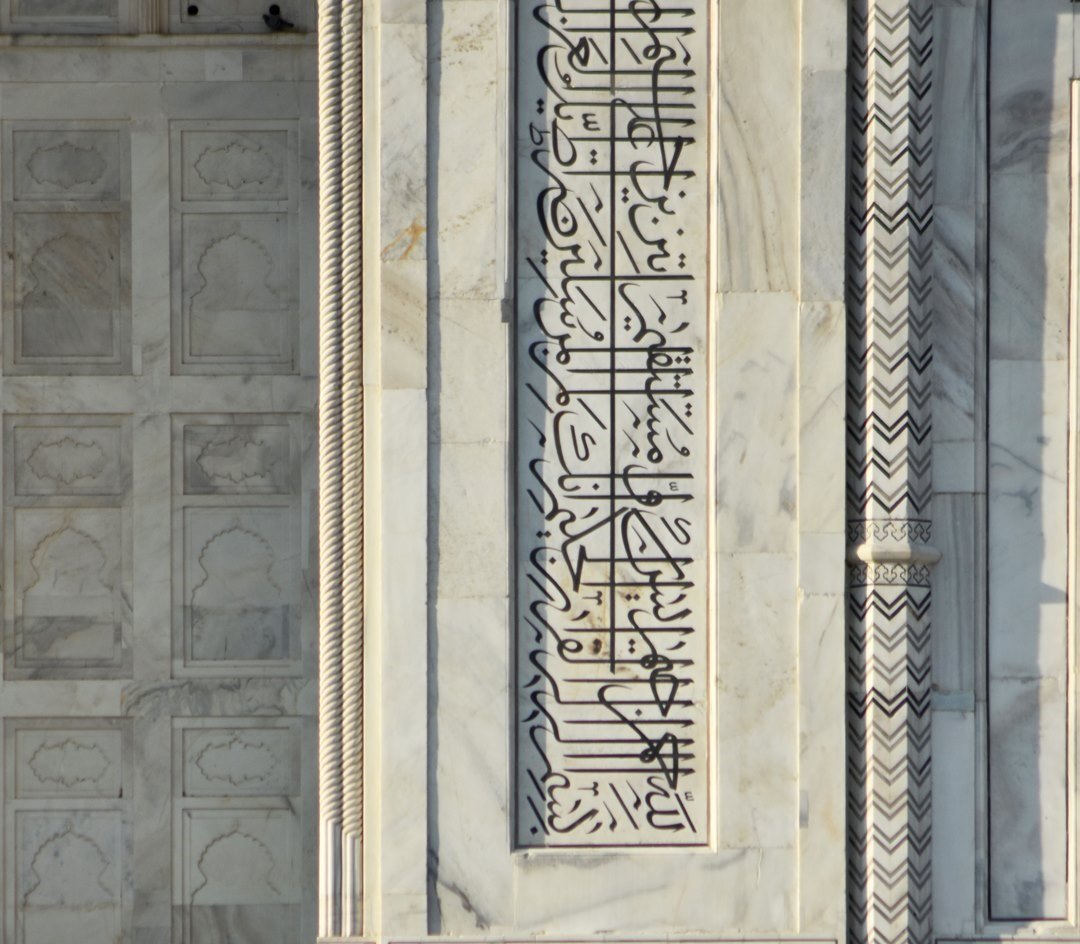The Taj Mahal is India's most famous structure
The Taj Mahal
(Mumtaj Palace) is India's most famous structure, and, perhaps the most
beautiful piece of architecture in the world. Photographs cannot truly
capture its grandeur. While this is true for most photos, it seems
especially true for this almost perfectly proportioned tomb of Mumtaz Mahal and
its creator, Shah Jahan, the fifth Mughal ruler
Mumtaz Mahal was the second, and favorite, wife of Shah Jahan (r. 1628-1658). A Persian princess born as Arjuman Banu Begum, she was a significant influence in his life and in his policies. She died at age thirty-nine while giving birth to their fourteenth (some say thirteenth) child in 1630. The ruler went into deep mourning and much of his empire was compelled to do the same.
Almost immediately there was announced a competition for plans to construct a tomb and shrine worthy of the ruler's beloved. Numerous legends surround the selection of the architect--some even implausibly suggesting that it was a westerner from
Shah Jahan moved his capital to
In the eighteenth century external forces challenged the power of the Mughals, like Persians, French and British overturned the loosely-knit Mughal empire. The Taj Mahal, accordingly, suffered from neglect and willful looting. Under the British, the marble terrace became a venue for balls and entertainments, and the gardens grew famous as trysting places. The British treated the Mughal monuments with scorn, and in the late 1820s Lord William Bentinck, governor-general of
The Taj Mahal is set on a raised platform that is 6.6 meters (20 ft) high and covers an area of 93.9 sq. meters (313 sq ft). The corner minarets are 41.1 meters (137 ft) high. The main structure is 62 meters (186 ft) on each side. In contrast to the gleaming white marble of the mausoleum, there is a pair of red sandstone buildings flanking the tomb to the west and to the east; the western building is a mosque, while the other, sometimes called the guest house or museum, was built to complete the symmetry of the scene. The water causeway and fountains beautifully join the gateway and the tomb in perfect symmetry.
There are numerous significant and striking elements in the Taj Mahal. The marvelously graceful piedra dura (or stone inlay work) Adorns many surfaces. This includes the three major elements of the Muslim decorative arts: the sayings from the Q'uran, geometrical shapes, and a variety of plant forms and flowers, often repeated as borders. The marble and precious stone inlays are so skillfully fit together that one can hardly detect a seam, even with close examination. The calligraphy of sayings from the Q'uran on the mausoleum is in a kind of trompe l'oeil style; the letters gradually increase in size as they go up the side of the structure so that from the ground all letters appear perfectly uniform. Perhaps, however, the greatest impact is how all of its parts fit together so perfectly, making the entire complex much greater than the sum of its parts.
Finally, it is hoped that some solution will be found to deal with the enormous pollution of the area that is a threat to one of the world's supreme architectural achievements.
Taj Mahal Tours




